As I have mentioned before I worked for my dad’s business, K. B. Canham Cameras, Inc., for 20 years as my primary job. It was never a full-time job, but it was my job. During that time I did a lot of different things for the company. Some of the stuff I did was mundane and some was fun. I got to learn a lot of different things and I got to travel overseas.
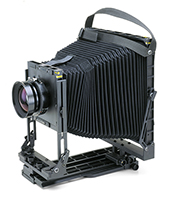
I started off when I was 15. I was tasked with sanding, staining, and waxing wooden camera parts in the garage at my house. The sanding was time consuming, and I had to wear earmuffs and a mask (pre-covid) while doing it. It required attention to what I was doing otherwise I could have rounded off corners or caught the sandpaper on a sharp edge and could tear it up too early, or even broken ends off pieces. I did get to listen to music while doing it, so that was nice. To make the finish correct I always had to do two passes: once with a coarse paper and once with a fine paper. I spent hours sanding those wooden parts. They looked fine after I was done, but then it was time for the next step – staining. On many of the parts this meant wearing a rubber glove and “painting” the stain (a Danish oil) onto the entire part, letting it sit a for few minutes, and then rubbing the excess stain off each of the parts. Then there were parts (like the back) that required stain to only be in certain areas. I would have to be extra careful to not get stain into certain areas because they were going to get lacquered black and the stain would sometimes interfere with the lacquer adhering correctly to the part. At this point the parts started looking really nice. The dark natural stain really made the parts look nice. After a few days I would come back to the parts and then I would apply a wax to the stained surfaces. This gave the parts a bit of a water seal, and really made the parts “shine”. This was also a two-step process where I would wax them, and then have to buff them to get the excess wax off.
After some time of mostly doing that for the company I started doing the actual assembly of the cameras. I can’t tell you how many cameras I assembled during my time with the company, but it must be in the thousands. Doing this required me learning from my father how parts went together. A lot of the time this started with having to make sure all the threaded holes in all the metal parts were “cleaned”. Early on this was done all by hand. I would have a tap that I would run in and out of every hole on nearly every part of the cameras. I would typically just get a box that had all of one part and do them all at once, and then move to the next part, etc. until they were all done. Once that was done I would get all the parts needed for a step and then put that section together. I learned all about bolts of different sizes: 10-32, 4-40, 8-32, and more. At first I would assemble an entire camera all at once, but as the years passed and the business grew, I started assembling cameras like an assembly line. I would do all of one (or a few) step(s) on all of a certain model of camera, and eventually I would have a large number of cameras all assembled and ready to go. (think about building 100 identical Lego sets and doing all of steps 1-3 first on all the sets, then 4-6, etc. until all 100 sets were built). This method mostly occurred once we moved our operation from the house I grew up in to where my parent’s eventually moved to and a separate building setup for the company. We had a lot more room then, and could set things up where needed. When doing assembly, I was able to watch TV, listen to music, etc. and I could just get into a zone and build away for hours each day. It was a lot of fun. I loved seeing the cameras come together. Initially the cameras were just the traditional wood and metal design 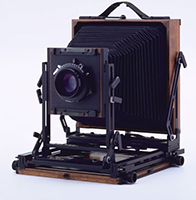 , but over time my father also designed all metal cameras as well
, but over time my father also designed all metal cameras as well 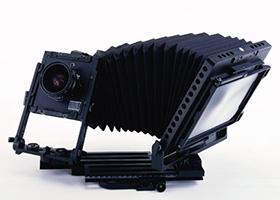 . So, this required me to just do the assembly side of things and not the wood working side of things. I also learned to trim the bellows and glue frames on them for the cameras as well. Got to love the smell of 3M glue…
. So, this required me to just do the assembly side of things and not the wood working side of things. I also learned to trim the bellows and glue frames on them for the cameras as well. Got to love the smell of 3M glue…
One day my father decided he wanted to design a 6×17 roll film back 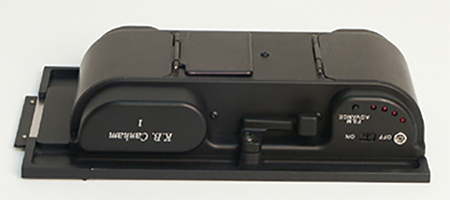 . This would work on his 5×7 cameras. But there were already 6×17 backs out there so to be different he wanted it to be all electronic. As a result, he had to design not just the housing, but the electronics and programming as well. He was able to do this. And I had the joy of learning how to do soldering of the circuit boards. Again, I did this in an assembly line fashion. Just like I was building the cameras I would get a circuit board and start with some component, say LED lights, and just install them on all the boards. Then I would move to the next component until they were all assembled. Finally I would have to build the roll film backs with the electronics in them. I can remember days of testing backs over and over to make sure the programming was correct so the film would advance the correct amount so that a customer would get correct number of images without overlapping the images. There was a lot of back and forth with programing IC’s. I learned about cold solder joints when something wouldn’t work, and upon reinspection of the circuit board I would find something didn’t have a good solder contact. That is something that I have used in different areas of my life since.
. This would work on his 5×7 cameras. But there were already 6×17 backs out there so to be different he wanted it to be all electronic. As a result, he had to design not just the housing, but the electronics and programming as well. He was able to do this. And I had the joy of learning how to do soldering of the circuit boards. Again, I did this in an assembly line fashion. Just like I was building the cameras I would get a circuit board and start with some component, say LED lights, and just install them on all the boards. Then I would move to the next component until they were all assembled. Finally I would have to build the roll film backs with the electronics in them. I can remember days of testing backs over and over to make sure the programming was correct so the film would advance the correct amount so that a customer would get correct number of images without overlapping the images. There was a lot of back and forth with programing IC’s. I learned about cold solder joints when something wouldn’t work, and upon reinspection of the circuit board I would find something didn’t have a good solder contact. That is something that I have used in different areas of my life since.
I was able to learn all about the different sizes of cameras and how they worked as well. My father designed cameras of all different sizes: 4×5, 5×7, 4×10, 5×12, 8×10, 7×17, 8×20, 11×14, 12×20, 14×17, and even 20×24. (For those that don’t understand large format cameras these are the sizes of the sheets of film the cameras use in inches so a 5×7 uses a piece of film that is 5 inches by 7inches). It also drew me to taking pictures using these cameras as well. I will write on that at some other time.
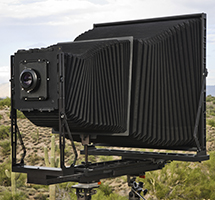
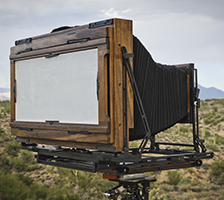
As the business got bigger, we eventually needed a website. So, I was tasked with trying to setup a website. I learned how to use Adobe Dreamweaver to design a basic website that would provide information about the cameras and where to buy them. Over time I have changed things here and there, but the site is still pretty much the basic information site we wanted. I did have to learn how to create forms so people could ask questions if they had them and that was fun to do as well (pre-google but eventually working with that as well). Not as much fun as building cameras, but still a tool that I have used in other places since learning it for the camera business.
Another thing that working for my father’s business allowed me to do was travel to Germany for Photokina multiple times. I had the opportunity to go in 2000, 02, 04, 06, 08 and 10. The first time I went I was in a booth with another camera manufacture that my father knew (Mike Walker of Walker Cameras). Then there were times we were in a booth with Schneider a lens manufacturer. And the last two times we were in the Kodak booth (since my father was selling special order Kodak film). Every time was a unique experience. Photokina is the largest photo tradeshow in the world. And during the first few times I went it took place in 14 sperate convention halls that were each enormous (most were two stories, and each hall is about the size of McCormick Place in Chicago). The show lasted 6 days, and you could easily walk nonstop the entire time and not see everything. I learned how to talk to people from around the world about how the cameras worked. I also got to meet photographers and other camera makers from around the world (Germany, Austria, and Japan). I got to know some interesting people as well (a photographer named Urs comes to mind). Every time it was fun hanging out with them at the show or after the show for dinner. There are many things I will never forget about going to the show and the experiences. But one that really stands out was from the first time I went in 2000. I was wandering the show and I came around a corner and there were naked ladies in a booth being painted by someone. They were up against a wall with a backdrop and a painter was getting them to blend in with the background. I don’t remember what the booth was for, but I remember that (and then it happened a couple more times on other days at different booths). I was not prepared for that. I remember going back to the booth and telling my dad, and his response was, “Oh yeah that happens here.” Another year I had my face 3D scanned and then my face was put into a glass block using lasers. I gave that to my wife when I got home. She still has it on her work desk. The shows were always fun. I learned so much about business things, people skills, friendships, the scope of the photo industry, how to ride the trains in Germany, eating Hungarian food, amazing ice cream, and talking with my dad.
One of the biggest things I got out of working for my dad was all the time we had to talk. Once we moved to the new location it was just my dad and I there all day long. We would carpool out sometimes (30 minutes one way from my parents house) and once there we would chat while working or during lunch. We would talk about all kinds of things from news, weather, life, school, work, business, cars, motorcycles, and more. I really got to know my dad better during that time. I cherish that time and I miss that time.
There are days now when I do wish I still worked for him. The business has changed a lot, less camera sales and more film sales. So I am certainly not needed there like I was in the 2000’s, but that time for conversation was an amazing blessing. I have always valued my dad, and that time really built that value up.
I am sure that one day the business will end as it currently is. The camera side of things will fade away and stop, and only the film sales will occur. My dad has talked about me someday taking over that part once there are no more cameras to build, and maybe I will. I can see me working with my kids boxing up film to get shipped around the US and the world. I think that could be fun, but I am not sure I have the time for it at the moment. Who knows (well God does).
Michael, I remember with pleasure our meetings…all best to you…
Thanks for reading. I also remember our meetings. You introduced my father and I to the Hungarian restaurant along the river that was amazing. You were always so kind and cheerful.